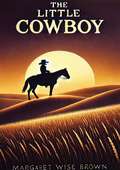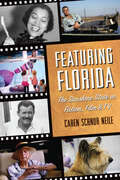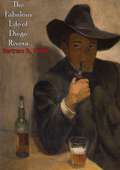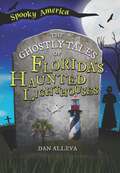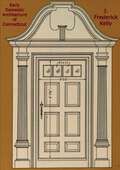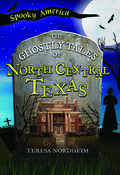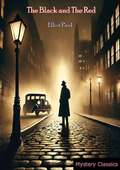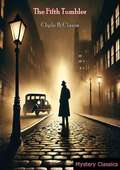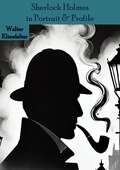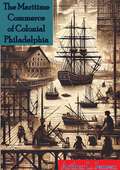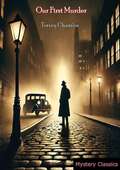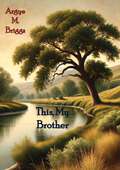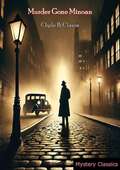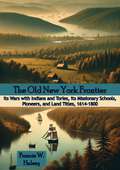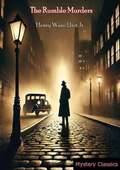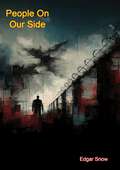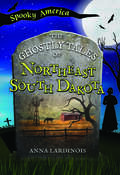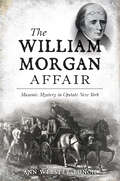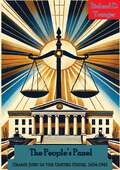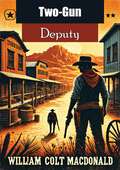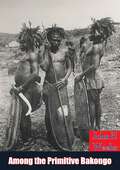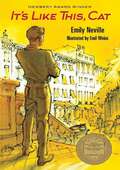- Table View
- List View
The Little Cowboy
by Margaret Wise BrownMargaret Wise Brown’s The Little Cowboy is a heartwarming and imaginative tale that captures the boundless spirit of adventure through the eyes of a young cowboy. Written with Brown’s signature lyrical style and charm, this enchanting story takes readers on a journey into the wide-open plains, where dreams and reality blend seamlessly in a world full of wonder.The little cowboy, with his trusty hat and lasso, embarks on a series of adventures, exploring the beauty and challenges of the wild frontier. Along the way, he encounters friendly animals, the mysteries of nature, and the joy of discovery, all while embracing the courage and independence that make cowboys so iconic. With simple yet evocative language, Brown paints a vivid picture of life on the range, sparking the imagination of young readers.Perfectly complemented by delightful illustrations that bring the cowboy’s world to life, The Little Cowboy is a timeless story about curiosity, bravery, and the magic of childhood adventures. Whether read aloud or enjoyed quietly, this charming book is sure to captivate the hearts of children and parents alike.Ideal for fans of Brown’s beloved classics, The Little Cowboy is a celebration of the wild west through the lens of a child, making it a treasured addition to any young reader’s library.
Featuring Florida: The Sunshine State in Fiction, Film & TV
by Dr Caren S. NeileAuthor Caren Schnur Neile offers a whole new way to explore Florida. Dexter, Key Largo, The Yearling—all famous works of popular culture created by masters in their fields. What’s more, all three take place in Florida. This plunge into Florida-based TV, movies and fiction from the nineteenth century to the present both entertains and educates about the Sunshine State and the stories themselves. Did you know who producers originally wanted to star in Bad Boys or which product saw skyrocketing sales thanks to Miami Vice? Florida enthusiasts will also find a good, long list of enticing shows and books to enjoy, from old favorites like Their Eyes Were Watching God, Scarface and The Golden Girls to newer masterpieces like The Florida Project and Moonlight.
The Fabulous Life of Diego Rivera
by Bertram D. WolfeBertram D. Wolfe’s The Fabulous Life of Diego Rivera offers an engrossing and intimate portrait of one of the 20th century's most influential and controversial artists. Renowned for his larger-than-life murals and his equally colorful personality, Diego Rivera’s life was as dynamic and revolutionary as his art.Wolfe explores Rivera’s artistic evolution, from his early years as a prodigious talent in Mexico to his formative studies in Europe, where he absorbed influences from the avant-garde movements of the time. The book chronicles his return to Mexico, where he became a leading figure in the Mexican Mural Movement, creating monumental works that celebrated the struggles and triumphs of the Mexican people. Rivera’s art, infused with bold imagery and political conviction, reflected his deep commitment to socialism and his vision of art as a tool for social change.Beyond his artistic achievements, Wolfe delves into Rivera’s tumultuous personal life, including his fiery relationship with fellow artist Frida Kahlo, his passionate political activism, and his interactions with prominent figures like Leon Trotsky and Pablo Picasso. Drawing on extensive research and personal acquaintance with Rivera, Wolfe paints a vivid picture of a man who was both a genius and a provocateur, leaving an indelible mark on the art world and beyond.Rich in detail and insight, The Fabulous Life of Diego Rivera is both a biography and a celebration of a complex artist whose work and life continue to inspire and provoke. This book is a must-read for art lovers, historians, and anyone fascinated by the interplay of creativity and revolution.
The Ghostly Tales of Florida's Haunted Lighthouses (Spooky America)
by Dan AllevaGhost stories from Florida's Haunted Lighthouses have never been so creepy, fun, and full of mystery!Welcome to the spooky shores of Florida!Stay alert! Ghosts lurk around every corner. Even the most unexpected places might be haunted by wandering phantoms. Did you know St. Augustine is home to the most haunted lighthouse in all of Florida? Or that ghostly pirates stalk the lighthouse on Garden Key in search of buried treasure? Can you believe that when the sun sets at Carysfort Reef Light, the dead... come alive?Pulled right from history, these ghostly tales will change the way you see Florida's Haunted Lighthouses, and have you sleeping with the light on! Adapted from Haunted Florida Lighthouses by Heather Leigh, PhD
Early Domestic Architecture of Connecticut
by J. Frederick KellyJ. Frederick Kelly’s Early Domestic Architecture of Connecticut is a masterful study of the state’s historic homes, offering an in-depth exploration of the design, craftsmanship, and cultural influences that shaped early American architecture. Drawing from meticulous research and firsthand observation, Kelly provides a comprehensive account of Connecticut’s domestic buildings from the colonial period through the early 19th century.The book examines a variety of architectural styles, from simple one-room cottages to more elaborate Georgian and Federal designs, highlighting the evolution of building techniques and aesthetic preferences over time. Kelly details the materials, layouts, and construction methods used by early settlers, showcasing the ingenuity and resourcefulness required to adapt Old World traditions to the New World environment.Richly illustrated with detailed drawings and photographs, Early Domestic Architecture of Connecticut brings to life the charm and character of these historic structures. Kelly also places these homes in their broader social and historical context, exploring how they reflect the lifestyles, values, and challenges of the people who built and lived in them.This work is an essential resource for historians, architects, preservationists, and anyone interested in early American life. Kelly’s passion for the subject and his meticulous attention to detail make this book not only an authoritative reference but also a tribute to the enduring legacy of Connecticut’s architectural heritage.
The Ghostly Tales of North Central Texas (Spooky America)
by Teresa NordheimEncounter the spirits of North Central Texas—wealthy families lingering in their mansions, notorious outlaws still trapped in their jail cells. Welcome to spooky North Central Texas! Stay alert! Ghosts lurk around every corner. Even the most unexpected places might be haunted by wandering phantoms. Did you know that on stormy nights, ghosts bound in chains roam the halls at The Old Collin County Prison? Or that in Arlington, a haunted bridge echoes with screams of the dead? Can you believe the Adolphus Hotel in Dallas is home to a haunted elevator? Pulled right from history, these ghostly tales will change the way you see North Central Texas forever, and have you sleeping with the lights on! Adapted from Haunted North Central Texas by Teresa Nordheim
The Black and The Red
by Elliot PaulElliot Paul’s The Black and The Red is a gripping and poignant novel set against the turbulent backdrop of World War II. Blending historical depth with rich storytelling, Paul masterfully captures the chaos, fear, and humanity of a world torn apart by conflict.The novel follows the lives of two men—one a passionate idealist, the other a pragmatic realist—whose fates intertwine in a story of survival, resistance, and moral complexity. Through their contrasting perspectives, Paul examines the harsh realities of war, the sacrifices demanded by duty, and the enduring strength of the human spirit.Set in Nazi-occupied France, the narrative vividly portrays the struggles of those living under oppression and the dangers faced by individuals who dare to resist. Paul brings to life the courage of the French Resistance, the heartbreak of betrayal, and the enduring power of hope amid unimaginable adversity.With his trademark wit and keen eye for detail, Paul paints a vivid picture of life during wartime, balancing the stark realities of conflict with moments of humor, tenderness, and resilience. The novel is as much a meditation on human nature as it is a compelling tale of suspense and survival.The Black and The Red is a powerful and thought-provoking work, perfect for readers who appreciate historical fiction that delves deeply into the moral and emotional landscapes of its characters. Elliot Paul’s evocative prose and profound storytelling make this novel an unforgettable journey into the heart of war and the choices it forces upon those caught in its grasp.
The Fifth Tumbler
by Clyde B. ClasonClyde B. Clason’s The Fifth Tumbler is a masterful entry in the realm of Golden Age detective fiction, blending intellectual intrigue with a baffling mystery that will keep readers guessing until the final page. Featuring Theocritus Lucius Westborough, a scholarly amateur sleuth, the novel showcases Clason’s signature style of intricate plotting and atmospheric storytelling.The story begins with the mysterious death of a prominent inventor, found dead in a locked room under circumstances that defy explanation. The only clue? A cryptic object—a fifth tumbler—linked to one of his latest innovations. With the police stumped and suspicions falling on a wide cast of characters, Westborough is called upon to untangle the enigma and uncover the truth behind the bizarre crime.As Westborough delves into the victim’s life, he finds a web of motives, from industrial espionage and professional rivalries to personal vendettas. Set against the backdrop of 1930s Chicago, Clason skillfully combines the gritty reality of the city with the cerebral puzzles of a classic locked-room mystery. Every detail is meticulously crafted, drawing readers deeper into a world of hidden clues, misdirection, and suspense.Filled with unexpected twists and a satisfying conclusion, The Fifth Tumbler is a quintessential whodunit that exemplifies the best of the Golden Age tradition. Perfect for fans of Agatha Christie and Ellery Queen, Clason’s novel is a timeless puzzle that will captivate lovers of clever and sophisticated mysteries.
Sherlock Holmes in Portrait & Profile
by Walter KlinefelterWalter Klinefelter’s Sherlock Holmes in Portrait & Profile is a captivating exploration of one of literature’s most iconic characters, delving into the many artistic and literary depictions of Sherlock Holmes throughout history. This unique work examines the evolving image of the legendary detective, offering readers a fascinating blend of art, scholarship, and admiration for Arthur Conan Doyle’s creation.Klinefelter meticulously traces the visual and written portrayals of Holmes, from the early illustrations by Sidney Paget that defined his appearance to the countless interpretations in media and art that followed. Through detailed analysis, he reveals how these depictions reflect not only the character’s essence but also the cultural and artistic trends of their time.The book also delves into Holmes’ profile as a character—his intellect, eccentricities, and the traits that have made him an enduring figure in popular culture. Klinefelter provides insight into how these characteristics have been emphasized or reimagined across various mediums, from print to stage and screen.Richly illustrated and thoughtfully written, Sherlock Holmes in Portrait & Profile is a treasure trove for fans of the great detective. Whether you’re a devoted Sherlockian or simply fascinated by the intersection of literature and art, this book offers a compelling journey into the world of Holmes and his timeless appeal.A must-read for Holmes enthusiasts and collectors alike, this book is both a celebration of the detective’s legacy and a tribute to the artists and writers who have kept his image alive for generations.
The Maritime Commerce of Colonial Philadelphia
by Arthur L. JensenArthur L. Jensen's The Maritime Commerce of Colonial Philadelphia offers a detailed exploration of the bustling maritime trade that transformed Philadelphia into one of the most important ports in colonial America. Through meticulous research and vivid storytelling, Jensen examines the economic, social, and political forces that shaped the city’s rise as a key center of commerce and trade in the 18th century.The book delves into the intricate web of trade routes connecting Philadelphia to the Caribbean, Europe, and other American colonies, showcasing the city’s role as a hub for goods such as tobacco, grain, and textiles. Jensen also highlights the individuals and industries that drove this trade, from merchants and shipbuilders to dockworkers and sailors, illustrating how maritime commerce became the lifeblood of the city’s economy.In addition to its economic impact, Jensen explores how maritime activity influenced Philadelphia’s cultural and political development, fostering a cosmopolitan identity and playing a pivotal role in the city’s emergence as a revolutionary stronghold. The book provides a nuanced look at the challenges faced by colonial merchants, including piracy, economic regulations, and competition, offering readers a comprehensive understanding of the era’s maritime dynamics.The Maritime Commerce of Colonial Philadelphia is an essential resource for anyone interested in colonial American history, maritime studies, or the economic foundations of one of America’s most historically significant cities.
Our First Murder
by Torrey ChanslorTorrey Chanslor’s Our First Murder is a sharp and witty mystery that introduces readers to a delightful amateur sleuthing duo who find themselves unexpectedly entangled in a murder investigation. Set in the bustling world of 1940s New York City, this captivating whodunit offers a perfect blend of intrigue, humor, and engaging characters.The story begins when the staff of a struggling newspaper is thrown into turmoil after one of their colleagues is found dead under suspicious circumstances. With the police investigation leaving more questions than answers, two unlikely reporters take it upon themselves to solve the crime. What starts as an effort to uncover the truth for a sensational story soon turns into a perilous adventure as they uncover hidden motives, tangled relationships, and dark secrets lurking within their own workplace.Chanslor’s lively prose and knack for creating quirky, memorable characters make Our First Murder a thoroughly entertaining read. The banter between the protagonists, their keen observations, and their dogged determination to outsmart both the murderer and the authorities provide plenty of laughs and suspense.Full of twists and turns, this classic mystery will keep readers guessing until the final page. With its unique mix of humor and suspense, Our First Murder is a treat for fans of vintage detective fiction and those who enjoy clever, character-driven mysteries set in the golden age of journalism.
This, My Brother
by Argye M. BriggsArgye M. Briggs’s This, My Brother is a compelling and emotionally charged novel that explores themes of familial bonds, loyalty, and the complexities of human relationships in the face of adversity. Set in a rural community during a time of social and economic upheaval, the story examines how family ties are tested and strengthened when circumstances demand resilience and sacrifice.At the heart of the novel are two brothers whose lives take divergent paths yet remain deeply intertwined. As they grapple with personal ambitions, family expectations, and the weight of societal pressures, their relationship becomes a poignant reflection of love, rivalry, and forgiveness. Through moments of conflict and shared struggle, the brothers discover the true meaning of kinship and the enduring strength of their bond.Briggs’s vivid prose brings to life the challenges of life in a close-knit community, capturing both its hardships and its moments of joy. The characters are richly developed, with their hopes, flaws, and triumphs resonating deeply with readers. The novel also delves into the larger forces at play, exploring how external events shape individual choices and family dynamics.This, My Brother is a timeless tale that will appeal to fans of character-driven stories and those who appreciate thoughtful explorations of family and identity. With its blend of heartfelt emotion and nuanced storytelling, Briggs delivers a powerful narrative that lingers in the mind long after the final page is turned.
Murder Gone Minoan
by Clyde B. ClasonMurder Gone Minoan by Clyde B. Clason is a gripping and atmospheric mystery that plunges readers into a world of ancient intrigue and modern murder. Combining intellectual puzzles with thrilling suspense, Clason delivers a captivating tale that will delight fans of classic detective fiction.The story unfolds at a remote archaeological dig on the island of Crete, where an eclectic group of scholars and adventurers has gathered to unearth remnants of the ancient Minoan civilization. The tranquil setting soon turns sinister when one of the team members is found dead under mysterious circumstances. With tensions running high and secrets lurking beneath the surface, it becomes clear that this is no ordinary excavation.Enter Theocritus Lucius Westborough, a professor and amateur sleuth with a keen mind for solving puzzles. As he delves into the labyrinthine relationships among the team and unravels the threads of their personal motives, Westborough discovers that the murder may be linked to the ancient myths and artifacts they’ve been studying. Clason masterfully weaves together the rich history of the Minoans with the intricacies of a modern whodunit, creating a story as complex and intriguing as the archaeological site itself.Filled with red herrings, intellectual challenges, and vivid descriptions of Crete’s landscapes and history, Murder Gone Minoan is a classic in the tradition of Golden Age detective fiction. With its blend of history, mystery, and sharp deduction, this book is a must-read for fans of intelligent and atmospheric crime stories.
The Old New York Frontier: its Missionary Schools, Pioneers, and Land Titles, 1614-1800
by Francis W. HalseyFrancis W. Halsey’s The Old New York Frontier offers a compelling exploration of the rich and turbulent history of New York's frontier region between 1614 and 1800. Through vivid detail and thorough research, Halsey chronicles the dramatic events and key figures that shaped this pivotal area during a period of intense conflict and transformation.The book delves into the complex relationships between Native American tribes, European settlers, and British loyalists (Tories), shedding light on the wars, treaties, and alliances that defined the region’s early history. Halsey also examines the role of missionary schools in attempting to bridge cultural divides, the challenges faced by pioneering settlers, and the contentious land disputes that arose as communities expanded.Against the backdrop of the Revolutionary War and the broader colonial struggle for independence, The Old New York Frontier captures the hardships and triumphs of a region caught between competing interests and ideologies. Halsey’s meticulous attention to detail and use of historical records make this work an invaluable resource for understanding the complexities of early American life on the frontier.Rich in narrative and historical insight, this book is essential reading for history enthusiasts, particularly those interested in the intersection of Native American, Colonial, and Revolutionary history. It provides a fascinating window into the dynamic forces that shaped one of America’s most historically significant frontiers.
A Family Party
by John O'HaraJohn O’Hara’s A Family Party is a sharp and intimate novella that delves into the intricacies of family dynamics, societal expectations, and the often unspoken tensions that define relationships. Set in the mid-20th century, this compelling story showcases O’Hara’s trademark ability to illuminate the complexities of human behavior with precision and subtlety.The story revolves around a family gathering, ostensibly meant to celebrate a special occasion, but beneath the surface lies a web of secrets, rivalries, and long-simmering resentments. As the day unfolds, O’Hara expertly captures the nuances of conversation and interaction, exposing the fragile veneer of civility that masks deeper conflicts and hidden truths.Through his incisive characterizations, O’Hara presents a cast of individuals whose desires, insecurities, and ambitions clash in ways that feel both poignant and universal. The narrative deftly explores themes of loyalty, betrayal, and the weight of tradition, offering a vivid portrayal of how personal and societal pressures shape the choices we make—and the relationships we keep.With its razor-sharp dialogue and evocative prose, A Family Party is a masterful exploration of the human condition, delivering a story that is as relatable as it is thought-provoking. Perfect for readers who appreciate character-driven narratives and keen social observation, this novella is a testament to O’Hara’s skill as one of America’s great chroniclers of life and relationships.
The Rumble Murders
by Henry Ware Eliot Jr.Henry Ware Eliot Jr.'s The Rumble Murders is a classic mystery novel that weaves a chilling tale of murder, deception, and intrigue. Set in a secluded estate where secrets lurk behind every corner, this gripping whodunit challenges both the characters and the reader to unravel the truth before it’s too late.The story begins when a wealthy family’s gathering at their ancestral home is shattered by a shocking murder. The victim’s body is discovered near a mysterious feature on the property called “The Rumble,” an ominous geological formation that lends an eerie atmosphere to the estate. As the investigation unfolds, it becomes clear that the killer is someone within their circle, and everyone has something to hide.Amateur sleuths and professionals alike are drawn into a web of lies, old grudges, and long-buried secrets, all of which complicate the search for the truth. Eliot’s sharp prose and keen sense of suspense keep readers on edge as the characters’ motives and alibis are dissected. Twists and surprises abound, leading to a climax that is as unexpected as it is satisfying.Rich with atmosphere and populated by complex, intriguing characters, The Rumble Murders is a must-read for fans of classic detective fiction. Eliot’s masterful storytelling and clever plotting make this a timeless mystery that will captivate anyone who loves a good puzzle with a touch of the macabre.
People On Our Side: The Engrossing Story Of The Forces That Are Shaping The Future Destinies Of Russia, China And India
by Edgar SnowEdgar Snow’s People On Our Side is a thought-provoking and deeply personal account of global events during a tumultuous era, offering insights into the people and movements that shaped the geopolitical landscape of the mid-20th century. Known for his groundbreaking reporting on China, Snow turns his keen journalistic eye to the broader context of World War II and its aftermath, focusing on the alliances, ideologies, and struggles that defined the fight against fascism and imperialism.In this compelling narrative, Snow examines the lives and motivations of ordinary individuals and leaders who stood on the "right side" of history, committed to the ideals of freedom, justice, and equality. Through vivid storytelling and meticulous observation, he brings readers face-to-face with soldiers, workers, and revolutionaries from across the globe, highlighting their resilience and determination in the face of immense challenges.Snow’s firsthand experiences and interviews provide a rare and intimate perspective on the international alliances that shaped the wartime effort and the aspirations of those striving for a better future. From the battlefields of Europe and Asia to the political struggles in Washington and Moscow, People On Our Side explores the complexities of wartime solidarity and the shared vision of a postwar world free from oppression.With its blend of reportage, analysis, and human stories, People On Our Side is both a tribute to the unsung heroes of a global struggle and a call to remember the values that united nations and individuals in their fight against tyranny. This book is essential reading for anyone interested in World War II, the roots of global cooperation, and the enduring power of collective action.
Maria Theresa of Austria
by Margaret GoldsmithMargaret Goldsmith’s Maria Theresa of Austria is a compelling biography of one of Europe’s most remarkable and influential monarchs. As the only female ruler of the Habsburg Empire, Maria Theresa reigned from 1740 to 1780, navigating a male-dominated political landscape to transform her realm into a modernized and centralized power.Goldsmith delves into the life and reign of this formidable empress, from her unexpected rise to power following her father’s death to her determined efforts to defend and expand her empire during a period of relentless conflict, including the War of Austrian Succession. The book explores Maria Theresa’s political acumen, administrative reforms, and military strategies, all of which solidified her legacy as one of Europe’s great Enlightenment rulers.Beyond her political achievements, Goldsmith examines Maria Theresa’s personal life, including her devotion to her large family and her complex relationships with her husband, Francis I, and her children—most notably Marie Antoinette. Through rich detail and engaging storytelling, Goldsmith paints a nuanced portrait of a ruler who balanced the demands of empire with her roles as a wife and mother.Maria Theresa of Austria offers a fascinating look at a monarch whose vision and determination left an indelible mark on European history. This biography is essential reading for anyone interested in the Habsburg dynasty, the Enlightenment era, or the extraordinary lives of women who shaped the course of history.
Carolina Beach Music Compilation Albums: The Classics
by Dr Rick SimmonsThe Stories Behind the AlbumsCarolina beach music—those often-soulful songs about the beach, parties, that special love, dancing or just relaxing in the sun—has long been a mainstay of culture in the Southeast. Yet until the late 1960s, you needed an impressive collection of 45s if you wanted to hear those songs in your home or at a party. But beginning with Atlantic Records’ Beach Beat in 1967, that music slowly became available on albums from Bell, Warner Bros., Ripete and other labels. Through interviews and firsthand accounts, author Rick Simmons examines the stories behind those classic albums, the people who created them and the artists and songs that contributed to the phenomenon known as Carolina beach music.
The Ghostly Tales of Northeast South Dakota (Spooky America)
by Anna Marie LardinoisDo ghosts lurk at the historic Laura Ingalls Wilder homestead? Welcome to spooky Northeast South Dakota! Stay alert! Ghosts lurk around every corner. Even the most unexpected places might be haunted by wandering phantoms. Did you know that a ghostly Lady in White haunts Fort Sisseton Historic State Park? Or that at South Dakota State University, a music-loving spirit sometimes plays the pipe organ? Can you believe a terrifying, Bigfoot-like beast stalks the citizens of Little Eagle? Pulled right from history, these ghostly tales will change the way you see Northeast South Dakota forever, and have you sleeping with the lights on! Adapted from Ghosts and Legends of Northeast South Dakota by Deborah Cuyle
The William Morgan Affair: Masonic Mystery in Upstate New York (True Crime)
by Dr Ann Webster BunchDr. Ann Webster Bunch delves into the enigmatic disappearance of William Morgan, a 19th-century figure whose threat to expose Masonic secrets led to his mysterious vanishing, igniting political turmoil and leaving a case that remains unresolved nearly 200 years later.William Morgan was last seen in Batavia, New York, in September 1826, down on his luck and haunting the local pubs. An elusive local citizen, he had recently threatened to publish purported Masonic secrets. He was later arrested that same month in Canandaigua for petty theft and eventually transported and held in Fort Niagara. From there Morgan seems to have disappeared forever. The local Freemasons were accused of his demise. State Assemblyman and newspaper editor Thurlow Weed fanned the political flames to great effect. Yet Morgan was to return, this time in stone, atop a monument erected at Old Cemetery, Batavia, in 1882. Enigmatically, no body lies there. Thus, the case of Mr. Morgan technically remains that of a missing person almost two hundred years after his disappearance. Dr. Ann Webster Bunch takes an investigative science approach to this extremely cold case to demystify and highlight ways to resolve the fate of this highly polarizing historical figure.
The People’s Panel: Grand Jury in the United States, 1634-1941
by Richard D. YoungerThe People’s Panel: Grand Jury in the United States, 1634-1941 by Richard D. Younger is a comprehensive and insightful exploration of the grand jury system, tracing its origins, evolution, and role in American history. Spanning over three centuries, Younger examines how this institution—rooted in English common law—was adapted and developed in the unique political and social landscape of the United States.The book delves into the grand jury’s dual role as both a tool of justice and a guardian of citizens’ rights, providing an in-depth look at its function in criminal investigations and its capacity to check governmental authority. Younger explores significant moments in the history of the grand jury, including its role in colonial governance, its contributions during pivotal legal reforms, and its challenges in maintaining impartiality during times of political and social upheaval.Through detailed analysis and engaging storytelling, Younger highlights how the grand jury has been both celebrated for its commitment to justice and criticized for its susceptibility to corruption, bias, and inefficiency. By contextualizing these issues within the broader framework of American legal and political development, The People’s Panel sheds light on the complexities and contradictions of this enduring institution.Ideal for historians, legal scholars, and anyone interested in the evolution of American democracy, this book provides a rich and thought-provoking account of how the grand jury has shaped—and been shaped by—the nation’s history.
Two-Gun Deputy
by William Colt MacDonaldWilliam Colt MacDonald’s Two-Gun Deputy is a classic Western tale brimming with action, danger, and justice, set against the rugged backdrop of the untamed frontier. Known for his iconic storytelling, MacDonald delivers a thrilling narrative of courage, loyalty, and the relentless pursuit of law and order in a lawless land.The story follows a fearless deputy marshal who carries a reputation as a two-gun sharpshooter. When a small frontier town is gripped by a ruthless gang bent on terror and control, the deputy steps in, armed with a quick draw and an unwavering sense of justice. As he uncovers a web of corruption and betrayal, he must navigate a minefield of danger to restore peace to the community.Along the way, the deputy faces fierce shootouts, shifting alliances, and the growing tension of a mysterious past that continues to haunt him. As the stakes rise, his battle for justice becomes a personal mission to prove that even in the harshest conditions, one man’s determination can make a difference.With vivid descriptions of the Western landscape and fast-paced action sequences, MacDonald crafts a story that captures the spirit of the Old West while delving into themes of redemption, honor, and resilience.Two-Gun Deputy is a must-read for fans of traditional Westerns and tales of lone heroes standing tall against the odds. MacDonald’s sharp prose and dynamic characters ensure that this novel remains a timeless classic in the Western genre.
Among the Primitive Bakongo: and other tribes of equatorial Africa, with a description of ... habits, customs & religious beliefs
by John H WeeksAmong the Primitive Bakongo by John H. Weeks offers a vivid and insightful account of life among the Bakongo people of Central Africa, based on the author’s extensive firsthand experiences as a missionary and ethnographer in the late 19th and early 20th centuries. Weeks provides a detailed exploration of Bakongo culture, traditions, and social structures, capturing the essence of their daily lives, beliefs, and customs.The book delves into various aspects of Bakongo society, from their kinship systems and governance to their religious practices and ceremonies. Weeks pays particular attention to the Bakongo’s spiritual worldview, including their use of fetishes, ancestral worship, and rites surrounding life, death, and healing. Through his careful observations, he illuminates how these traditions shaped the community's identity and cohesion.While grounded in the anthropological curiosity of its time, Among the Primitive Bakongo also reflects the broader context of European interactions with African societies during the colonial period. Though written from the perspective of a Western observer, the work offers valuable historical insights into a rich and complex culture that was undergoing significant change.With its blend of ethnographic detail and narrative storytelling, this book remains a fascinating resource for anyone interested in African history, anthropology, or the interplay between tradition and transformation in a rapidly shifting world.
It's Like This Cat
by Emily NevilleEmily Neville’s It’s Like This, Cat is a heartfelt and engaging coming-of-age story about a boy, a stray cat, and the lessons they learn together about life, friendship, and growing up. Winner of the Newbery Medal, this timeless novel captures the complexities of adolescence with humor, warmth, and insight.The story follows Dave Mitchell, a 14-year-old navigating the ups and downs of life in 1960s New York City. Caught in the usual struggles with his parents and feeling isolated, Dave’s life takes a turn when he adopts a stray cat on the advice of a family friend. The cat, independent and mischievous, becomes Dave’s unlikely companion, leading him into unexpected friendships and adventures that change his perspective on the world.Through his bond with Cat and his encounters with people like Tom, an older boy with a troubled past, Dave begins to see life beyond his own challenges. He learns about trust, responsibility, and understanding others, all while exploring the vibrant streets of New York.Neville’s vivid storytelling and authentic portrayal of teenage emotions make It’s Like This, Cat a relatable and enduring classic. Perfect for young readers and adults alike, this book is a poignant reminder of how even small connections can lead to life-changing experiences.
